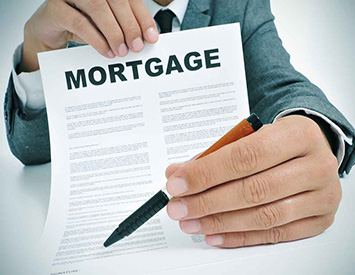Owning a home is becoming increasingly difficult for new generations of Australians to achieve, with a distinct social divide or a property bubble burst result, writes Dr Glen Anderson.
AUSTRALIA IS FAST becoming a two-tiered society, divided between those who own real property and those who do not. The former class of Australian tends to be older and has experienced steady wage growth and living standard increases over successive decades. They are likely to have cash savings, superannuation earned and, in some instances, one or more investment properties.
Those Australians who do not own real property, however, have been left behind. The profile of this Australian tends to be young. They have only seen minimal wage growth during their working life and have tended to be shut out of natural employment progression due to older workers opting to remain within the workforce post-GFC.
Compounding these issues, between 2009 and 2017, house prices have skyrocketed in Sydney and Melbourne by more than 100%. In a recent survey by Demographia, it was revealed that Sydney’s "median multiple" – median house price divided by median household income – was the second highest in the world, at 12.9 — the highest ever outside of Hong Kong. Melbourne came in at sixth at 9.9, just behind San Jose (Silicon Valley). The culmination of these circumstances is that innumerable young Australians have been locked out of the metropolitan and outer metropolitan housing market. Instead of owning their own home, they are trapped in the rent cycle, paying down their investor-landlords’ inflated mortgages. The age of egalitarianism and a fair go, at least when it comes to young Australians desirous of home ownership, is virtually over.
The IMF has forecasted a “soft landing” for Australian house prices, even though the market is still between 5-15% overvalued. #mortgage @IMFNews https://t.co/LXkyvxF3IU
— Your Mortgage (@YourMortgageAu) February 22, 2018
It might be expected that the Coalition would have devoted some of its time to addressing these problems. Not so, it would seem. Aside from tokenistic changes to superannuation, nothing has been done. The principal policy solution – exemplified by Coalition MP Michael Sukkar, Assistant Minister to the Treasurer – has been imploring young Australians to get a highly paid job as the first step to owning their own home. As an alternative, the Prime Minister, Malcolm Turnbull, has suggested that wealthy parents should act as benefactors and shell out for their children.
Meanwhile, the property bubble has run its own course, sustained by a period of record low interest rates and irresponsible lending practices.
Some sample calculations shed light on the extent of the problem. Presently, with an above-average annual wage of $100,000, a 30-year loan period and a 5.5% interest rate, it is possible to obtain a mortgage of $697,000. If the interest rate is increased to 7.5% – just two percentage points higher – then the same borrower is only able to obtain $579,000 ($118,000 less). If the interest rate is increased further still – to 8.5% – the same borrower can only obtain $532,000 ($165,000 less when compared to 5.5%).
These figures indicate that if interest rates were to increase only marginally in the coming years, substantial numbers of borrowers would be in over their financial heads.
A similar conclusion emerges when examining some sample repayment figures for a $500,000 mortgage. In the case of a 30-year loan period and an interest rate of 5.5%, the monthly repayments are $2,838. When the interest rate is increased to 7.5%, the monthly repayments rise to $3,496 — an additional $658 per month. When the interest rate is boosted by a further percentage point, to 8.5%, the monthly repayments reach $3,844 (an additional $1006 per month when compared to 5.5%).
Could you afford your mortgage if interest rates rise in Australia? https://t.co/OJ1imOlLKf
— LinkToSale (@linktosale) February 10, 2018
And the foregoing says nothing about the unprecedented numbers of interest-only mortgages reaching maturation in the coming years.
With wages stagnant and the cost of living climbing ever higher, many Australians will likely be caught if interest rates rise from current record lows. They will be required to sell to prevent payment defaults and, ultimately, the mortgagee’s power of sale. The problem, of course, is that interest rates will then be higher and new generations of first home buyers will be unable to borrow as much as those before them. When this is combined with a glut of homes on the market, prices – particularly in over-inflated metropolitan and outer-metropolitan areas – will inevitably fall by some margin. The bubble will burst.
Does it sound far-fetched? Think again. Seasoned and savvy financial analysts have been cautioning about a significant price correction for some time. Speaking before a Senate Estimates committee in June 2015, the Treasury Secretary John Fraser suggested that Sydney and higher priced parts of Melbourne were unequivocally in a bubble. In an interview with Sky News in December 2016, the former chief executive officer of the Commonwealth Bank, David Murray, cautioned that the Australian economy was "vulnerable" due to a bubble in Sydney and Melbourne house prices.
In April 2017, the founder and chief investment officer of Montgomery Investment Management, Roger Montgomery, similarly cautioned:
'With the IMF, the RBA, ASIC, APRA and David Murray all suggesting property is in a bubble and at risk of crash, ignore them at your own risk.'
Could anything have been done previously to diminish the risk of a rout on house prices? Equitable tax reform, such as quarantining negative gearing to new housing and reducing capital gains tax concessions, would have eased much of the inflation if implemented two or more years ago. This would have dampened investment in existing housing, thereby stabilising prices. It would have also assisted young Australians to enter the housing market.
[#ChrisKohler #Australia] Pressure is mounting on interest-only #mortgage borrowers as new research shows they tend to be poorer money managers and present as “risk flags” to financial institutions. pic.twitter.com/lEfl5CzRfB
— Dominic (@dominicsg) February 9, 2018
So why was nothing done? Three explanations loom large.
First, politicians, many of whom have enormous negatively geared property portfolios, were making millions.
Second, the Australian economy was less than effervescent and the construction boom was used to replace the mining boom. A sensible stabilisation of house prices via equitable tax reform would have increased the likelihood of anaemic, flat or even negative economic growth.
Third, with the 2016 Federal election approaching, older voters – who typically own their homes outright and often have one or more investment properties – were crucial to disproportionately underpin the Coalition’s (faltering) electability. Why? Because, statistically, young voters disproportionately support Labor and the Greens. The Coalition thus chose a hands-off approach to negative gearing and capital gains concessions to keep house prices on an upward trajectory and decrease the chances of an election defeat.
Australia’s housing prognosis is grim. Unless interest rates rise, Australia is certain to become a two-tiered society, divided between those who own real property and those who do not. However, if rates do rise, many Australians seeking to avoid mortgage default will be forced to sell in a bear market.
A two-tiered society, or the bursting of the property bubble? Take your pick.
Dr Glen Anderson researches in the areas of international law, equity, company and property law. He has formerly taught Australian and international politics at Macquarie University.

This work is licensed under a Creative Commons Attribution-NonCommercial-NoDerivs 3.0 Australia License
Monthly Donation
Single Donation
Strong overseas migration and solid jobs growth, as well as low mortgage rates and higher first home buyer activity should help to keep a floor under #Sydney housing prices | https://t.co/paC5OjEbxE#ausproperty #SydRE #realestateau #aushousing
— CoreLogic Australia (@corelogicau) February 20, 2018
Subscribe to IA. Cheaper than your average mortgage.











